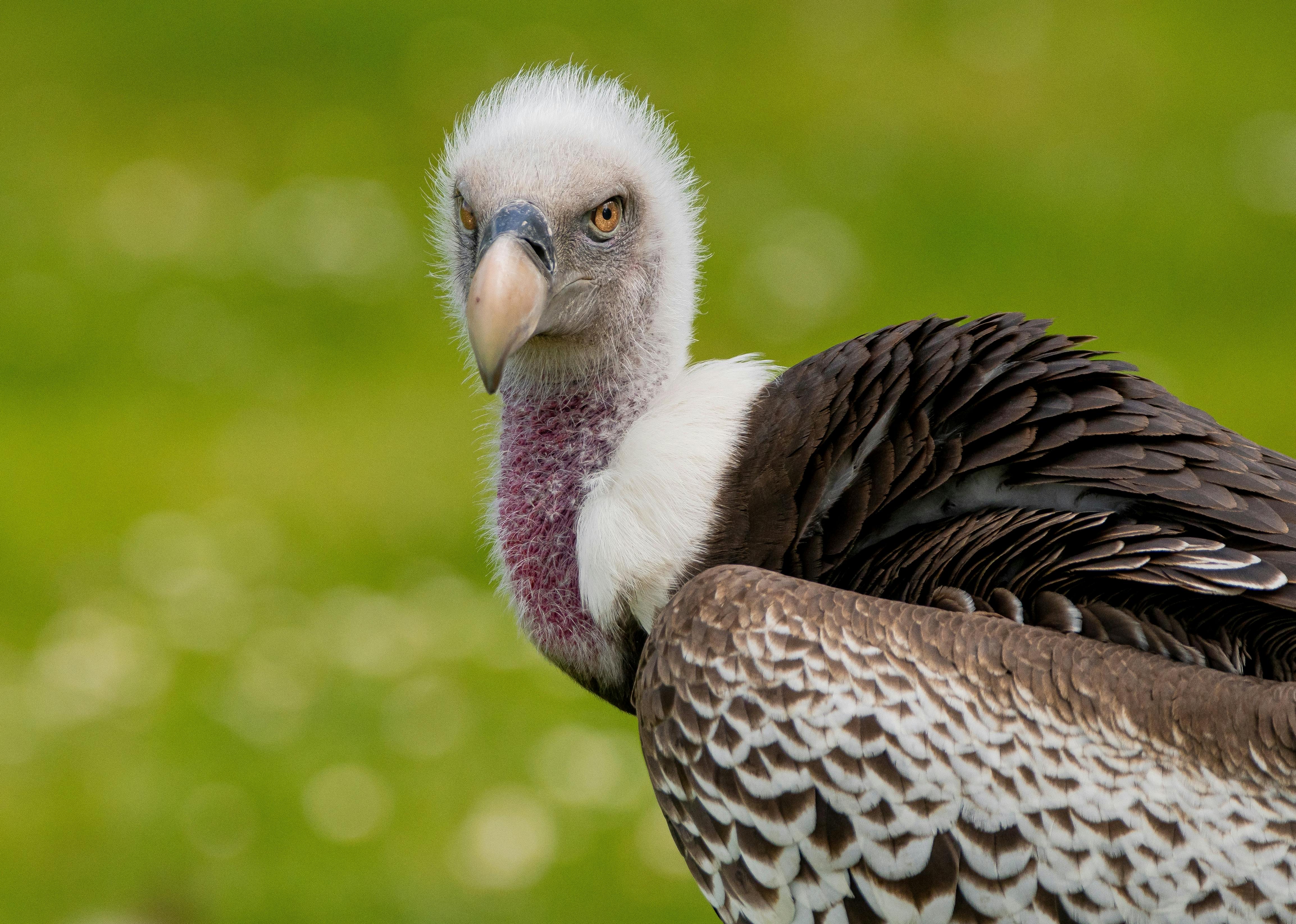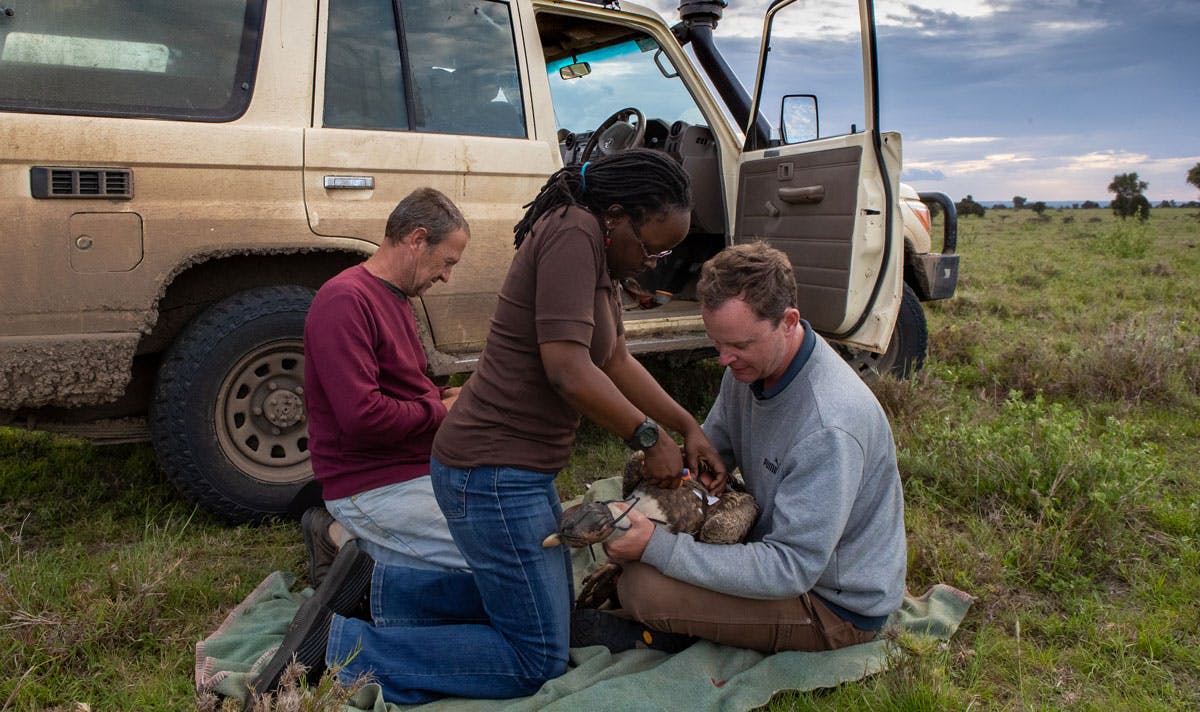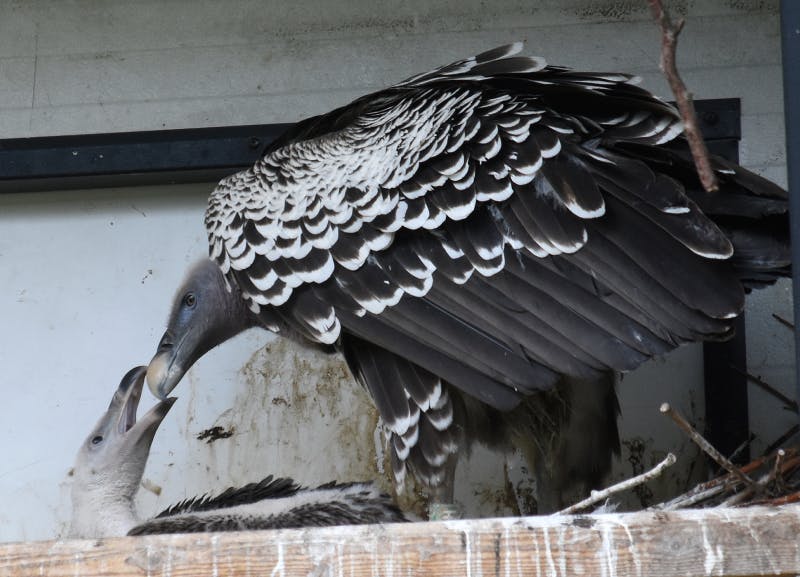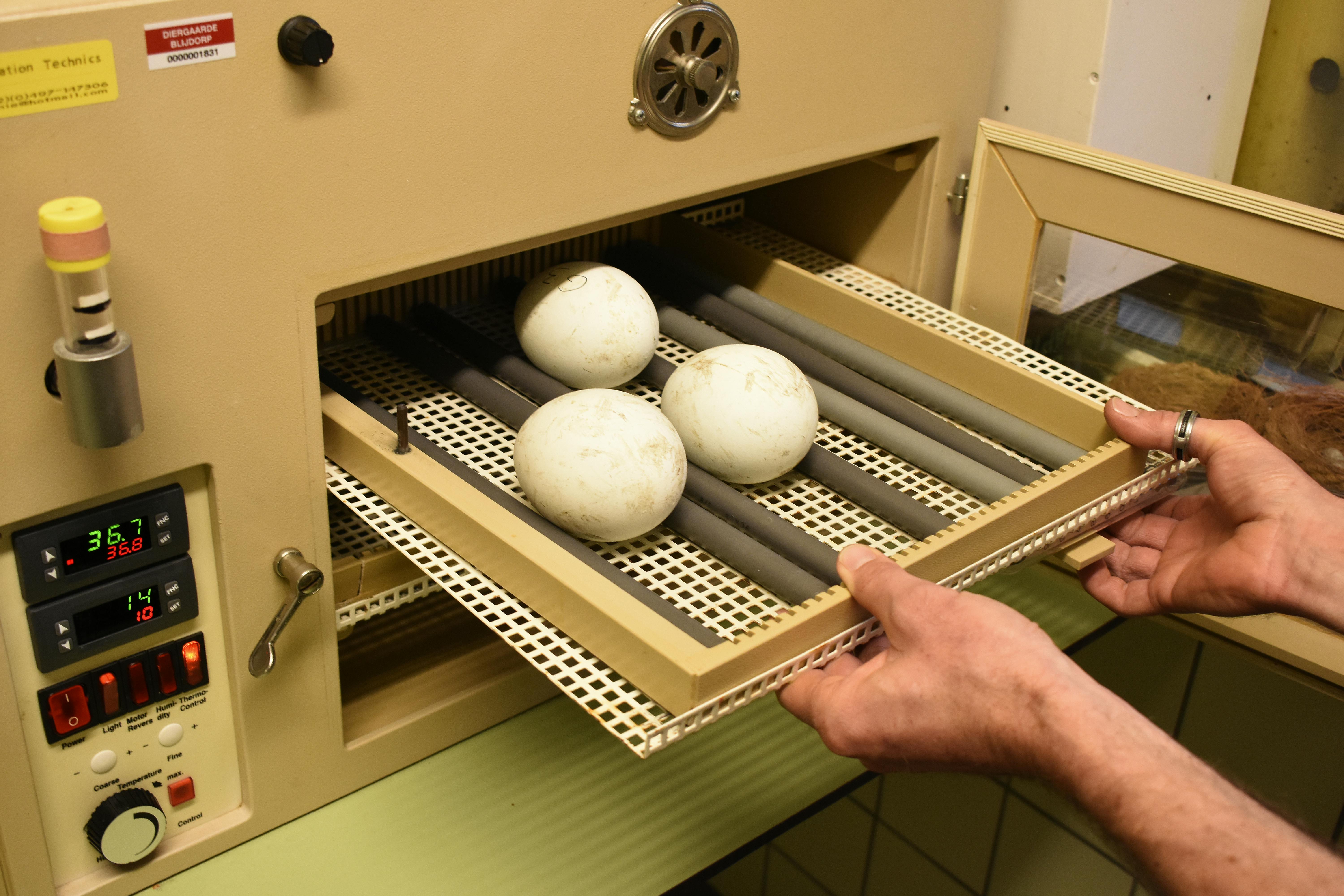
Rüppell's vultures scan the African plains from high altitudes, looking for carcasses to eat. In doing so, they fulfil an important role in their habitat: keeping the savannah clean. This prevents the outbreak of diseases that can also be dangerous to humans. Unfortunately, vultures in Africa are doing very poorly. As coordinator of the European population management programme for the Rüppell's vulture, Rotterdam Zoo is therefore committed to protecting African vultures.
Gyps rueppelli

40 years
± 1 meter
6.4 – 8 kilograms
The Rüppell's vulture is a large, scavenging bird. Like many other vultures, it has an almost bald head and neck, which allows it to easily stick into a carcass without getting dirty. It distinguishes itself from other vultures with its dark grey feathers with white edges at the ends. Below you can see the difference between it and all the other vultures at Rotterdam Zoo.
Rüppell's vultures are found throughout Africa, especially in the area around the equator. Their habitat extends from the west coast of Senegal to the east coast of Somalia and Tanzania. They are also increasingly spotted in Spain or Portugal. They fly mostly over vast savannas and steppes, but also require rocks and cliffs for nesting.

Vultures do not hunt live animals: they are scavengers. They only eat animals that have died in other ways: due to illness, because they have been killed by a predator or conspecific, or simply due to old age. With their bald heads and sharp beaks, they can easily extract the flesh from these carcasses. Once swallowed, they digest the flesh easily: their stomachs are so acidic that even bones dissolve in them! Fortunately, this also kills most of the germs that could threaten the vulture. In this way, vultures safely dispose of carcasses that might otherwise cause infectious diseases to break out.

Rüppell's vultures are social birds that live in so-called “colonies”. These groups consist of several pairs. Research conducted at Rotterdam Zoo and Avifauna in collaboration with Utrecht University shows that vultures make many different sounds to communicate with each other: from threatening sounds to indicate dominance to sounds to avoid quarrels.

Rüppell's vultures are monogamous birds. This means that they live in pairs. In principle, they stay together for their entire lives. To find a mate, they use sounds and flight movements to impress their partner.
Rüppell's vultures are one of many animal species in which homosexual couples have been observed. These birds also usually remain faithful to each other for their entire lives, even without young to care for.

Rüppell's vultures nest on rocks and cliffs, where predators can't easily reach them. The parents take turns looking for food and brooding.
Rüppell's vultures naturally lay one egg at a time. When the chick is about to hatch, it makes sounds to communicate with its parents. The chick remains in the nest for about 3.5 months before flying the nest. It then takes at least 4 years before the young vulture can start a nest of its own.

Rüppell's vultures often have to share carcasses with other scavengers. Fortunately, most vulture species eat slightly different parts of the carcasses. This means they don't have to fight for food as often.
Vultures also have to be wary of leopards, lions and hyenas. These animals are also often attracted to carcasses and could attack a vulture that gets too close.

Because vultures are so good at finding carcasses, they are also attracted to poached rhinos and elephants. Vultures circling above a carcass can reveal the location of poachers to rangers. That is why poachers pour poison over the carcasses they have killed. The vultures that come to feed on them die in massive numbers from the poison, allowing the poachers to continue their work unseen. Partly as a result of this, seven of the eleven African vulture species are now critically endangered, including the Rüppell's vulture.

Rotterdam Zoo supports the Peregrine Fund in Kenya, an organization dedicated to the protection of birds of prey worldwide. They send teams into Africa to clean up poisoned carcasses and try to raise awareness among local people about the important role of vultures. They also use GPS transmitters to track Rüppell's vultures. When a transmitter does not move for a suspiciously long time, a team jumps into action to investigate what happened to the vulture. They can then remove the poisoned carcass as quickly as possible. This way they prevent more vultures from dying from poisoning.

Rotterdam Zoo coordinates the European population management programme for Rüppell’s vultures. Based on the pedigree of vultures in zoos, the coordinator determines which animals are best suited to each other for healthy offspring. These young elephants are then transferred to other zoos, where they form the next generation. In this way, we are building up a healthy population as a reserve for wild animals, with the ultimate goal of returning vultures to their natural habitat when conditions there are favourable.

Rüppell's vultures only lay one egg per year. The chance of this one successfully hatching and the young growing up is very small. To lend an extra hand, Rotterdam Zoo uses a trick, based on a natural mechanism of the vultures. When a vulture has laid an egg, caretakers remove it and place it in the incubator. In response, the vulture lays a second egg after four weeks. The first egg hatches in the incubator and the chick is returned to the parents by the zookeepers. At that time, the second egg is removed and continues to hatch in the incubator. This second chick is then placed with adoption parents, which fortunately is quite easy. In this way, twice as many vultures can grow up.



